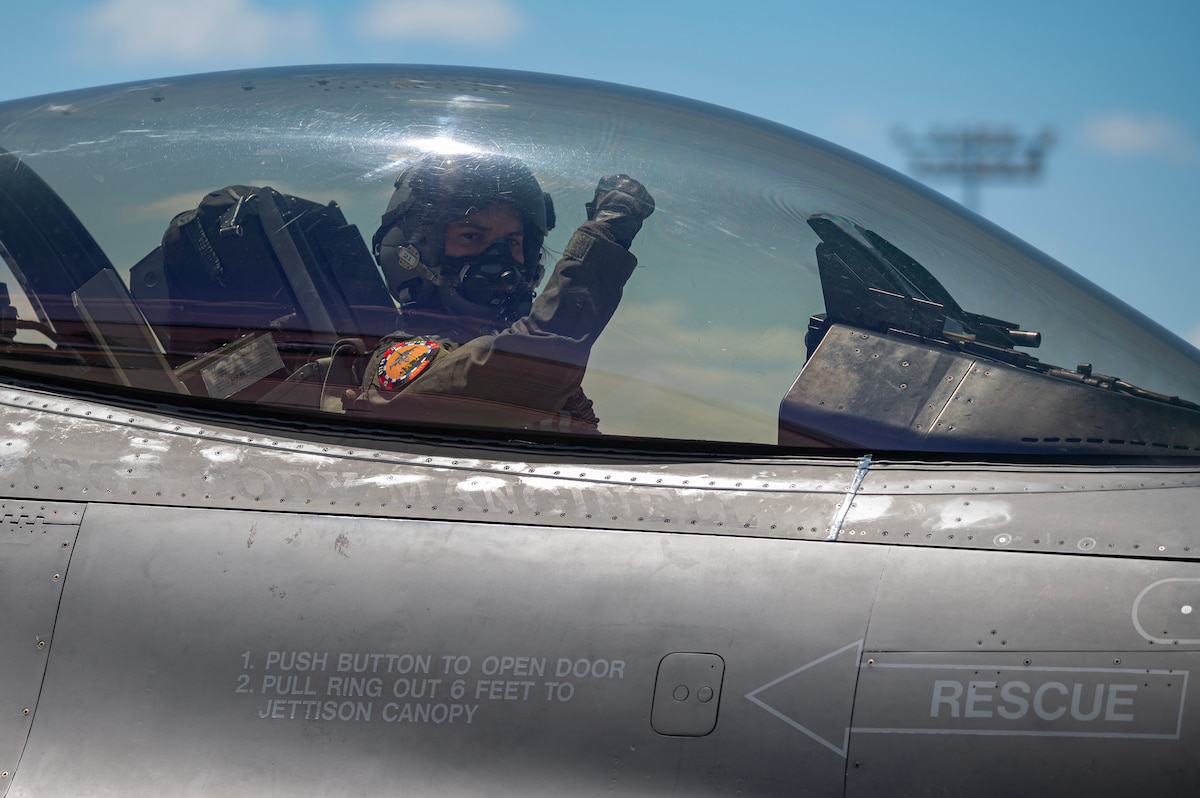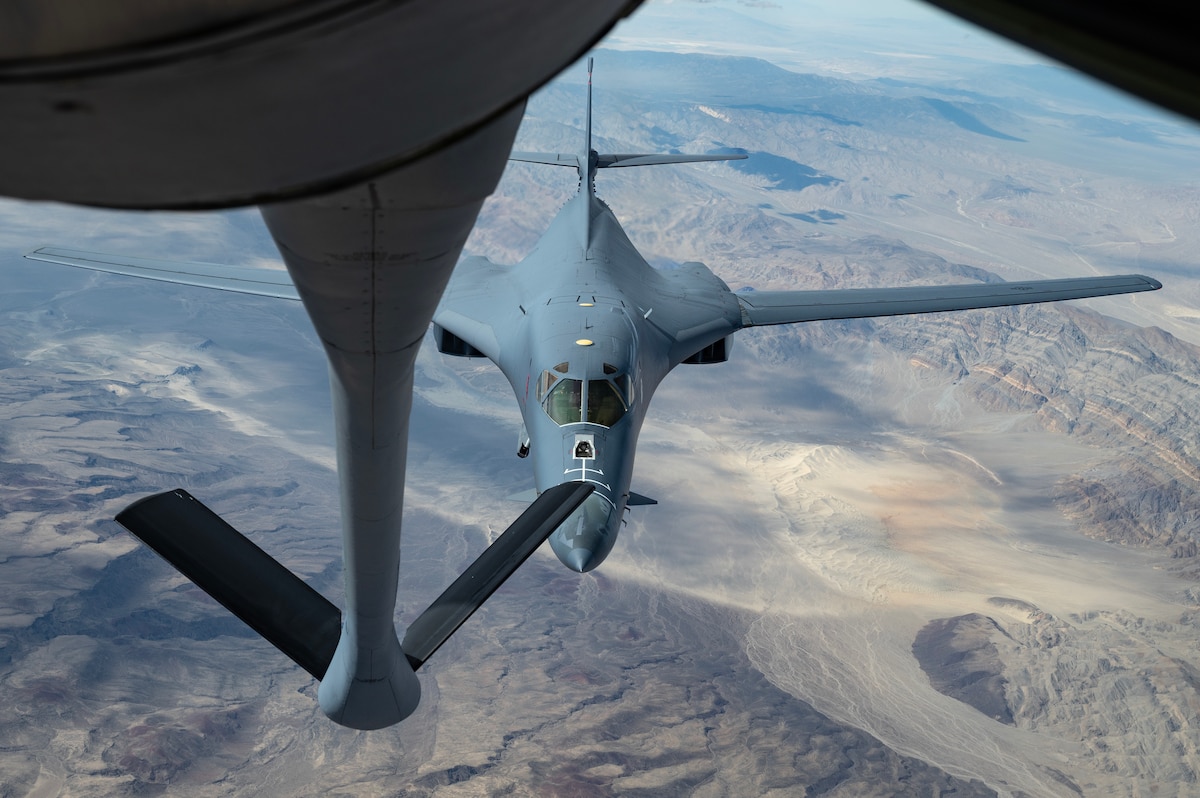For over 50 years, the US Air Force (USAF) exercise Red Flag has been meant to give its pilots a real feel of combat. The 2023 edition of the Red Flag has been planned with an eye on an aggressive China and to maintain a “free and open” Indo-Pacific.
Towards this end, the USAF joined forces with US Navy’s aircraft carrier battle group to prepare itself for a potential conflict with China as Beijing ups its ante against Taiwan.
“The Department of Defense prioritizes the People’s Republic of China as our number one pacing challenge,” US Air Force Colonel Eric Winterbottom, 414th Combat Training Squadron commander, said in a press release issued by the USAF.
Colonel Winterbottom added: “By training together in a realistic and challenging environment, the USAF and Navy enhanced their joint capabilities, bolstering the nation’s ability to maintain a free and open Indo-Pacific.”
“My priority for future Red Flag exercises is to ensure realism and relevance,” he continued. “Red Flag will continue to expand into long-range, dispersed, joint and coalition, peer-contested training scenarios. We also train to respond to and effectively deter nation-state threats emanating from Russia, Iran, and North Korea, and transnational and non-state actor threats from violent extremist organizations, such as those operating in the Middle East, Africa, and South and Central Asia.”
US Air Force General Mark Kelly, head of the service’s Air Combat Command, announced this in a tweet: “Congratulations to all who participated in RED FLAG – NELLIS 23-3. This was RF’s (Red Flag) first maritime integration into the Navy’s COMPTUEX, the largest adaptation of RF since its inception nearly 50 years ago.”
Each Carrier Battle Group performs a Composite Training Unit Exercise rehearsal (COMPTUEX) before departing for a six-month deployment. The US Naval surface vessels and carrier-based assets took part in the exercise edition Red Flag 23-3 in addition to EA-18G Growler electronic warfare aircraft.
The Air Force fielded its F-35A Joint Strike Fighter and F-22 Raptor stealth fighters, B-1 bombers, KC-135 and KC- Bombers, KC-135 and KC-46 tankers, and HH-60G Pavehawk rescue helicopters took part in the exercise that took place from July 17 until August 4.
A video of the Red Flag exercise shared by General Kelly said: “The idea was to give them (air force pilots) up to 10 reps of realistic live training in air-to-air combat, large force engagement, so they had those (skills) under their belt when they went to deployment.” The narrator of the video added: “When we first started to pivot about eight-ish years ago to the INDOPACOM [US Indo-Pacific Command] theatre, as our interest turned to our peer competitor [China], our exercises soon followed suit.”

“What we’ve seen is an exponential leap in how we drive scenarios in Red Flag, and most other exercises, to Pacific-driven and all the challenges that provide, [like] the unique challenges of the large distances you find when you fight in areas like the Pacific,” the video narrator said.
“We’ve expanded our training with the Navy to include maritime training… [at] similar distance[s] that we might see in a Pacific fight, that goes over water and poses those new challenges that flying sorties over the exposed ocean does provide as opposed to doing it overland,” it continued.
Reports indicate that the Red Flag 23-3 was focused on dealing with a future conflict with China in the Pacific, triggered by Beijing’s aggression against the island of Taiwan. Alarm bells have been ringing in the DoD over a potential war with China by 2025.
A four-star Air Force General Mike Minihan, head of Air Mobility Command, earlier in 2023, predicted the US would be at war with China in two years and told them to get ready to prepare by firing “a clip” at a target and “aim for the head.”
In a memo, General Minihan said: “I hope I am wrong. My gut tells me (we) will fight in 2025.” Minihan noted in the memo that because Taiwan and the US will have presidential elections in 2024, the US will be “distracted,” and Chinese President Xi Jinping will have an opportunity to move on to Taiwan.
Air Mobility Command has nearly 50,000 service members and almost 500 planes and is responsible for transport and refueling.

As earlier reported by the EurAsian Times, a leading strategic think tank, International Institute for Strategic Studies (IISS), recently published a report that stated there is no evidence that Russia’s stumbling invasion of Ukraine has altered China’s intentions about a potential invasion of Taiwan.
Recently, the media has reported that Chinese military preparations are extensive and comprehensive to fully blockade and encircle Taiwan if it decides to make a military move on the island.
New and unusual exercises around the island and a diverse range of drills that practice all aspects of a military operation have been reported since former US Speaker Nancy Pelosi visited Taipei in August 2022. The event permanently altered many aspects of China’s approach to Cross-Strait relations, its ties with the US, and regional and global politics.
While the US defense experts might be erring on the side of caution, there is no denying that Beijing will not be averse to using force against the island should Taiwan declare formal independence.
- Ritu Sharma has been a journalist for over a decade, writing on defense, foreign affairs, and nuclear technology.
- She can be reached at ritu.sharma (at) mail.com




